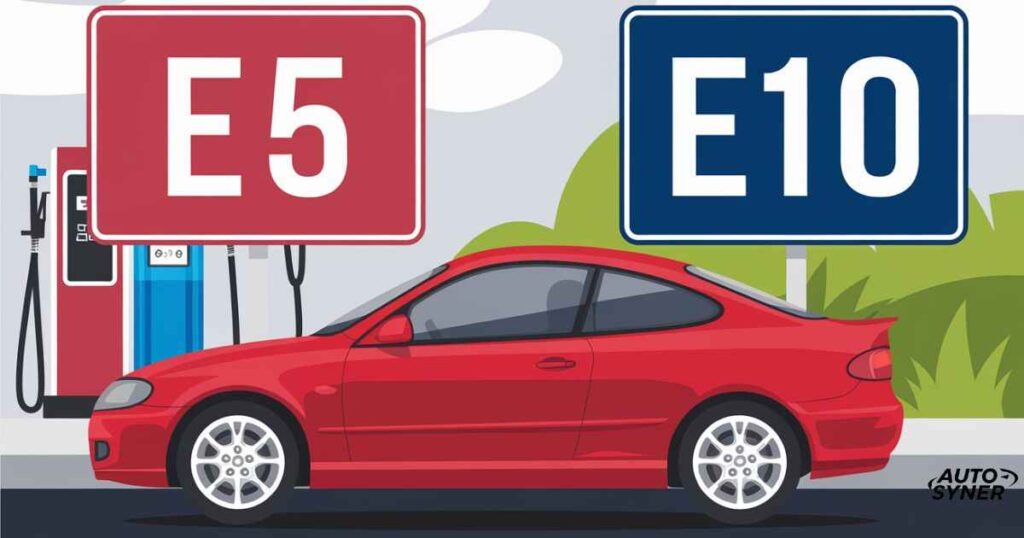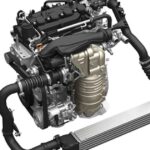As we move towards a more sustainable future, the automotive industry is constantly evolving to reduce its environmental impact. One of the most significant changes in recent years has been the introduction of E10 petrol as a replacement for the traditional E5 fuel.
This shift has left many car owners wondering about the implications for their vehicles. In this comprehensive guide, we’ll explore the key differences between E5 versus E10 petrol: how does it affect my car, providing you with all the information you need to navigate this transition confidently.
Introduction to E5 and E10 Petrol
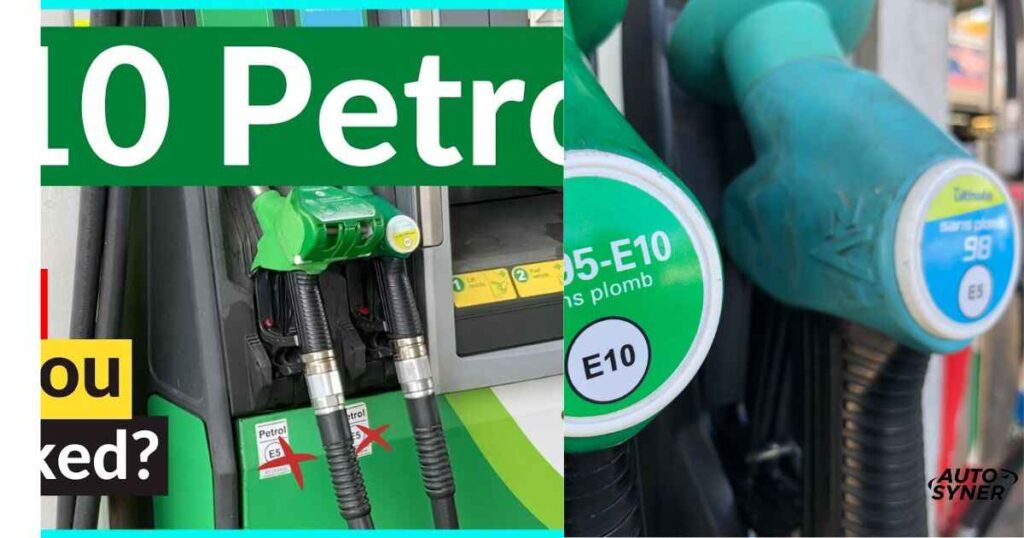
What is E5 Petrol?
E5 petrol, the fuel that has been the standard in many countries for years, is a blend of traditional petroleum-based fuel with up to 5% ethanol. This small percentage of ethanol was introduced to help reduce carbon emissions without significantly altering the fuel’s properties or affecting vehicle performance.
E5 has been widely used and accepted by most vehicles manufactured in the past few decades.
What is E10 Petrol?
E10 petrol, on the other hand, contains up to 10% ethanol mixed with 90% traditional petroleum-based fuel. This increased ethanol content is part of a global effort to further reduce carbon emissions and increase the use of renewable energy sources in the transportation sector. The introduction of E10 as the new standard fuel has been a significant step towards meeting climate change targets.
The Shift from E5 to E10: Why the Change?
The transition from E5 verso uses E10 petrol is driven by environmental concerns and international commitments to reduce greenhouse gas emissions. In 2021, many countries, including the UK, began phasing out E5 as the standard unleaded petrol in favor of E10.
This change is expected to significantly reduce carbon dioxide emissions from vehicles, contributing to national and global climate goals.
Composition Differences: E5 vs E10
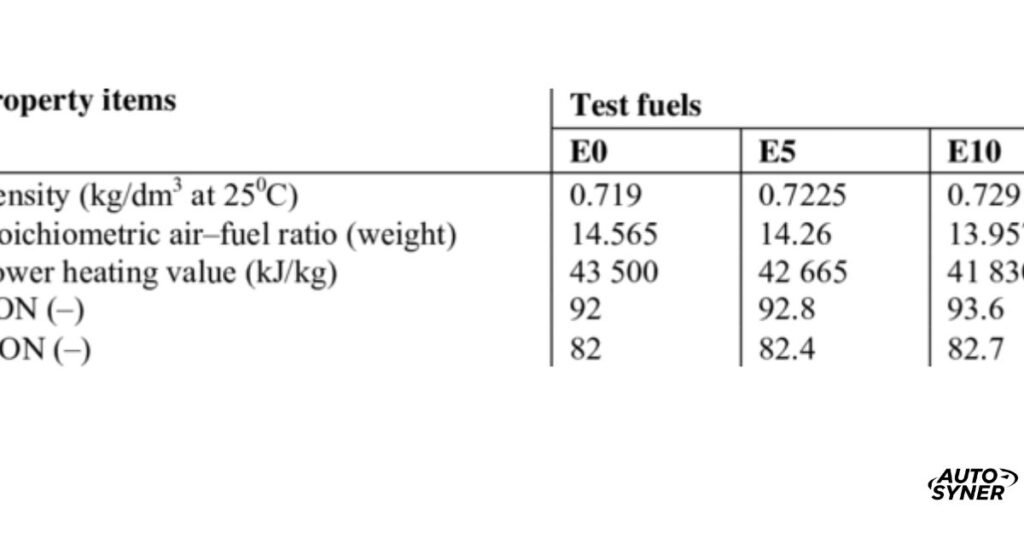
Ethanol Content Comparison
The primary difference between E5 and E10 petrol lies in their ethanol content. While E5 contains up to 5% ethanol, E10 doubles this to 10%. This increase might seem small, but it has notable implications for both the environment and vehicle performance.
The higher ethanol content in E10 means that more of the fuel comes from renewable sources, potentially reducing the overall carbon footprint of the fuel.
Production Process Differences
The production processes for E5 versus E10 petrol are similar, with the main difference being the amount of ethanol blended into the final product. Ethanol for fuel use is typically produced through the fermentation of plant materials, often corn or sugarcane.
The increased demand for ethanol in E10 fuel has led to expanded production of these crops specifically for fuel use, which has its own set of environmental considerations.
Environmental Impact: E5 vs E10
CO2 Emission Reduction
One of the primary motivations behind the switch to E10 petrol is its potential to reduce carbon dioxide emissions. Studies have shown that E10 can reduce CO2 emissions by up to 2% compared to E5, which may seem small but can add up to significant reductions when applied across millions of vehicles.
For instance, the UK government estimates that the switch to E10 could cut CO2 emissions by 750,000 tonnes per year, equivalent to taking 350,000 cars off the road.
Renewable Energy Contribution
The increased ethanol content in E10 petrol represents a step towards greater use of renewable energy in transportation. Ethanol is considered a renewable fuel because it’s produced from plants that can be regrown annually.
This contrasts with fossil fuels, which take millions of years to form and are being depleted much faster than they can be replenished. By using more ethanol in our fuel mix, we’re reducing our dependence on finite fossil fuel resources.
Vehicle Compatibility: E5 vs E10
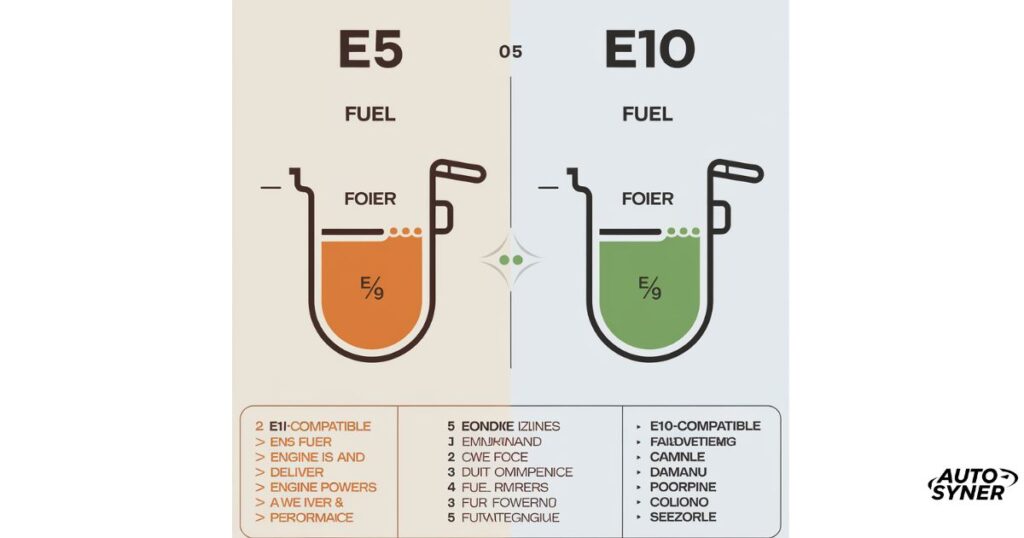
E5-Compatible Vehicles
Most vehicles manufactured before 2011 were designed with E5 petrol in mind. These include many classic cars and older models that are still on the road today. For these vehicles, E5 remains the recommended fuel, as their fuel systems and engine components were not designed to handle the higher ethanol content of E10.
E10-Compatible Vehicles
The majority of cars manufactured after 2011 are designed to be compatible with E10 petrol. These newer vehicles have fuel systems and engine components that can handle the slightly more corrosive nature of the higher ethanol content. In fact, all new petrol vehicles sold in the EU since 2011 have been required to be E10 compatible.
Checking Your Vehicle’s Compatibility
If you’re unsure whether your vehicle is compatible with E10 petrol, it’s crucial to check before filling up. Many countries have online tools where you can enter your vehicle details to check compatibility.
For example, the UK government provides an E10 vehicle checker on their website. Alternatively, you can consult your vehicle’s manual or contact the manufacturer directly. It’s always better to be safe than sorry when it comes to E5 versus E10 petrol: how does it affect my car.
Performance Implications: E5 vs E10
Fuel Economy Comparison
One of the most noticeable differences between E5 and E10 petrol for many drivers is the impact on fuel economy. E10 petrol has a slightly lower energy content than E5 due to its higher ethanol content.
This means that vehicles running on E10 may experience a slight decrease in fuel efficiency, typically around 1-2%. While this difference is small, it can add up over time, especially for high-mileage drivers.
Engine Power and Performance
The impact of E10 on engine power and performance is generally minimal for most modern vehicles. Some drivers may notice a slight decrease in power output, particularly in high-performance vehicles.
However, for everyday driving, the difference is often imperceptible. It’s worth noting that some newer engines are optimized for E10 fuel and may actually perform better with it than with E5.
Cold Start and Running Issues
In colder climates, some drivers have reported issues with cold starts when using E10 petrol. This is because ethanol has a higher tendency to absorb water, which can lead to fuel separation in low temperatures.
While this is rarely a significant problem in modern vehicles, it’s something to be aware of, particularly for those living in areas with harsh winters.
Long-term Effects on Vehicle Components
Fuel System Impact
The higher ethanol content in E10 petrol can have some long-term effects on a vehicle’s fuel system. Ethanol is more corrosive than traditional petrol and can degrade certain types of rubber and plastic over time.
This is particularly relevant for older vehicles that weren’t designed with E10 in mind. Components such as fuel lines, seals, and gaskets may deteriorate more quickly when exposed to E10 fuel.
Engine Wear and Tear
When it comes to engine wear and tear, the differences between E5 and E10 are generally minimal for compatible vehicles.
However, if an incompatible vehicle uses E10 regularly, it could lead to increased engine wear over time. This is due to ethanol’s tendency to break down oil, potentially leading to increased friction and wear on engine components.
Maintenance Considerations
While the maintenance requirements for E10-compatible vehicles aren’t significantly different from those for E5, there are a few considerations. More frequent oil changes might be necessary, as ethanol can break down oil more quickly.
Fuel filters may also need to be replaced more often, as E10 can dislodge deposits in the fuel system. It’s always best to follow the manufacturer’s recommendations for maintenance when switching to E10 fuel.
Cost Implications: E5 vs E10
Fuel Price Comparison
In most markets, E10 petrol is priced similarly to or slightly cheaper than E5. This is because ethanol is generally less expensive to produce than petroleum-based fuel.
However, the slightly lower fuel economy of E10 may offset these savings for some drivers. It’s worth noting that in countries where E5 is still available, it’s often sold as a premium fuel at a higher price point.
Long-term Running Costs
When considering the long-term costs of E5 versus E10 petrol: how does it affect my car, it’s important to factor in both fuel prices and potential maintenance costs.
While E10 may be cheaper at the pump, the slightly lower fuel efficiency and potential for increased maintenance in some vehicles could lead to higher overall running costs. However, for most modern, E10-compatible vehicles, the difference in long-term costs is likely to be minimal.
Read This Blog: Stop Vehicle Leave Engine Running Mercedes
Transition Period: Switching from E5 to E10
Mixing E5 and E10
During the transition period, many drivers wonder about the implications of mixing E5 and E10 petrol. The good news is that it’s generally safe to mix these fuels in any proportion. If you’ve been using E5 and switch to E10, or vice versa, there’s no need to wait until your tank is empty before refilling. The fuels will mix in your tank without causing any immediate issues.
Adapting Older Vehicles to E10
For owners of older vehicles that aren’t E10 compatible, there are a few options. Some may choose to continue using E5 where available, often sold as a premium fuel. Others might consider adapting their vehicles to use E10.
This could involve replacing vulnerable fuel system components with ethanol-resistant alternatives. However, such modifications should only be carried out by qualified professionals and may not be practical or cost-effective for all vehicles.
Regional Differences in E5 and E10 Availability
UK Rollout of E10
In the UK, E10 petrol became the standard grade of petrol in September 2021. The rollout was nationwide, with E10 replacing E5 as the ‘regular’ unleaded petrol at filling stations across the country. E5 petrol is still available at many stations, but it’s now sold as the ‘super’ grade and is typically more expensive.
Also Read This Blog: Why Is My Car Accident Settlement Taking So Long?
European E10 Adoption
The adoption of E10 petrol varies across Europe. Countries like Germany, France, and Finland introduced E10 several years before the UK. Others, like Spain and Italy, are still in the process of transitioning. This patchwork of fuel standards can be a consideration for drivers planning cross-border trips within Europe.
Future of Petrol: Beyond E10
Higher Ethanol Blends
Looking to the future, we may see even higher ethanol blends becoming more common. E15 (15% ethanol) is already used in some countries, particularly the United States.
There’s also E85, a high-ethanol blend used in flexible-fuel vehicles. As vehicle technology advances and environmental regulations tighten, these higher ethanol blends may become more prevalent.
Alternative Fuel Technologies
While E10 represents a step towards more sustainable fuel, it’s likely to be just one part of a broader shift in transportation energy. Electric vehicles are gaining market share rapidly, and other technologies like hydrogen fuel cells are also developing. The future of automotive fuel is likely to be diverse, with different solutions suited to different use cases.
Frequently Asked Question
What happens if I use E5 instead of E10?
Using E5 in an E10-compatible car is generally safe. You may experience a slight increase in fuel economy and potentially a small boost in performance. However, you’ll miss out on the environmental benefits of E10’s higher ethanol content.
Does E5 petrol clean the engine?
E5 petrol doesn’t have significant cleaning properties. While it contains some detergents to prevent deposit buildup, it’s not specifically designed to clean engines. Regular maintenance and occasional use of fuel system cleaners are more effective for engine cleaning.
Does E10 clean your engine?
E10 petrol has slightly better cleaning properties than E5 due to its higher ethanol content. Ethanol can help remove some deposits from fuel system components. However, it’s not a substitute for proper engine maintenance or dedicated cleaning products.
Is E10 fuel good for your car?
For most modern cars (post-2011), E10 fuel is perfectly suitable and can even be beneficial. It’s more environmentally friendly and supports the use of renewable resources. However, for older vehicles or classic cars, E10 might not be ideal due to potential compatibility issues with fuel system components.
Is E5 or E10 better for performance?
In terms of pure performance, E5 might have a slight edge due to its higher energy content. However, the difference is minimal for most everyday drivers. Some high-performance engines are specifically tuned for E10 and may actually perform better with it.
Does E10 reduce gas mileage?
Yes, E10 can slightly reduce gas mileage compared to E5. Due to its lower energy content, you might see a 1-2% decrease in fuel economy when using E10. However, this small reduction is offset by the environmental benefits of using a fuel with higher renewable content.
Conclusion
The transition from E5 to E10 petrol represents a significant step in the automotive industry’s efforts to reduce carbon emissions. While it brings some changes and considerations for vehicle owners, for the majority of modern vehicles, the switch to E10 should be seamless.
Understanding E5 versus E10 petrol: how does it affect my car is crucial for making informed decisions about fueling and maintaining your vehicle in this changing landscape.
As we move towards a more sustainable future, staying informed about these developments will help ensure that you can keep your vehicle running smoothly while contributing to environmental protection efforts.

